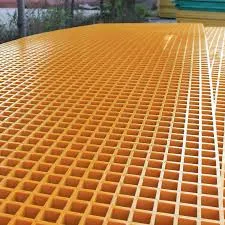
-
 Afrikaans
Afrikaans -
 Albanian
Albanian -
 Amharic
Amharic -
 Arabic
Arabic -
 Armenian
Armenian -
 Azerbaijani
Azerbaijani -
 Basque
Basque -
 Belarusian
Belarusian -
 Bengali
Bengali -
 Bosnian
Bosnian -
 Bulgarian
Bulgarian -
 Catalan
Catalan -
 Cebuano
Cebuano -
 China
China -
 China (Taiwan)
China (Taiwan) -
 Corsican
Corsican -
 Croatian
Croatian -
 Czech
Czech -
 Danish
Danish -
 Dutch
Dutch -
 English
English -
 Esperanto
Esperanto -
 Estonian
Estonian -
 Finnish
Finnish -
 French
French -
 Frisian
Frisian -
 Galician
Galician -
 Georgian
Georgian -
 German
German -
 Greek
Greek -
 Gujarati
Gujarati -
 Haitian Creole
Haitian Creole -
 hausa
hausa -
 hawaiian
hawaiian -
 Hebrew
Hebrew -
 Hindi
Hindi -
 Miao
Miao -
 Hungarian
Hungarian -
 Icelandic
Icelandic -
 igbo
igbo -
 Indonesian
Indonesian -
 irish
irish -
 Italian
Italian -
 Japanese
Japanese -
 Javanese
Javanese -
 Kannada
Kannada -
 kazakh
kazakh -
 Khmer
Khmer -
 Rwandese
Rwandese -
 Korean
Korean -
 Kurdish
Kurdish -
 Kyrgyz
Kyrgyz -
 Lao
Lao -
 Latin
Latin -
 Latvian
Latvian -
 Lithuanian
Lithuanian -
 Luxembourgish
Luxembourgish -
 Macedonian
Macedonian -
 Malgashi
Malgashi -
 Malay
Malay -
 Malayalam
Malayalam -
 Maltese
Maltese -
 Maori
Maori -
 Marathi
Marathi -
 Mongolian
Mongolian -
 Myanmar
Myanmar -
 Nepali
Nepali -
 Norwegian
Norwegian -
 Norwegian
Norwegian -
 Occitan
Occitan -
 Pashto
Pashto -
 Persian
Persian -
 Polish
Polish -
 Portuguese
Portuguese -
 Punjabi
Punjabi -
 Romanian
Romanian -
 Russian
Russian -
 Samoan
Samoan -
 Scottish Gaelic
Scottish Gaelic -
 Serbian
Serbian -
 Sesotho
Sesotho -
 Shona
Shona -
 Sindhi
Sindhi -
 Sinhala
Sinhala -
 Slovak
Slovak -
 Slovenian
Slovenian -
 Somali
Somali -
 Spanish
Spanish -
 Sundanese
Sundanese -
 Swahili
Swahili -
 Swedish
Swedish -
 Tagalog
Tagalog -
 Tajik
Tajik -
 Tamil
Tamil -
 Tatar
Tatar -
 Telugu
Telugu -
 Thai
Thai -
 Turkish
Turkish -
 Turkmen
Turkmen -
 Ukrainian
Ukrainian -
 Urdu
Urdu -
 Uighur
Uighur -
 Uzbek
Uzbek -
 Vietnamese
Vietnamese -
 Welsh
Welsh -
 Bantu
Bantu -
 Yiddish
Yiddish -
 Yoruba
Yoruba -
 Zulu
Zulu
grp chimney
Exploring the Benefits and Importance of GRP Chimneys
In today's fast-paced world, the need for efficient and reliable building materials has never been more essential. One such innovation that has gained traction in recent years is the use of Glass Reinforced Plastic (GRP) chimneys. These structures are becoming increasingly popular in various industries, including construction, manufacturing, and energy production. The advantages of GRP chimneys make them a compelling choice for architects, builders, and facility managers alike.
Exploring the Benefits and Importance of GRP Chimneys
Moreover, GRP chimneys are lightweight compared to their traditional counterparts. This characteristic simplifies transportation and installation processes, reducing labor costs and time. The ease of handling GRP materials allows for more efficient project execution, which is especially beneficial in industries with tight deadlines and budgets. Additionally, lighter chimneys put less stress on supporting structures, minimizing the overall structural load.
grp chimney

Another significant benefit of GRP chimneys is their versatility in design. These chimneys can be molded into various shapes, sizes, and colors, allowing architects and designers greater flexibility in their designs. This adaptability makes it possible to integrate chimneys seamlessly into a building's aesthetics, providing both functional and visual appeal. Furthermore, GRP can be engineered to meet specific performance criteria, such as thermal insulation, helping to improve energy efficiency and reduce operational costs.
The installation process of GRP chimneys is also noteworthy. They can be custom-fabricated off-site, which reduces on-site construction time significantly. This pre-fabrication capability not only accelerates project timelines but also minimizes disruptions to the surrounding environment during installation.
From an environmental perspective, GRP chimneys are considered a greener alternative. Their production involves techniques that reduce waste, and their longevity minimizes waste generation over time. Moreover, as energy efficiency is a growing concern worldwide, GRP materials offer excellent insulation properties, which can lead to reduced energy consumption and lower greenhouse gas emissions in buildings.
In conclusion, GRP chimneys represent a modern solution for various industries, combining durability, lightweight design, versatility, and environmental benefits. As the construction and manufacturing sectors continue to evolve, the adoption of innovative materials such as GRP will play a crucial role in creating sustainable, functional, and aesthetically pleasing infrastructures. For anyone involved in the building industry, understanding and embracing the advantages of GRP chimneys is essential for staying ahead in a competitive landscape.









